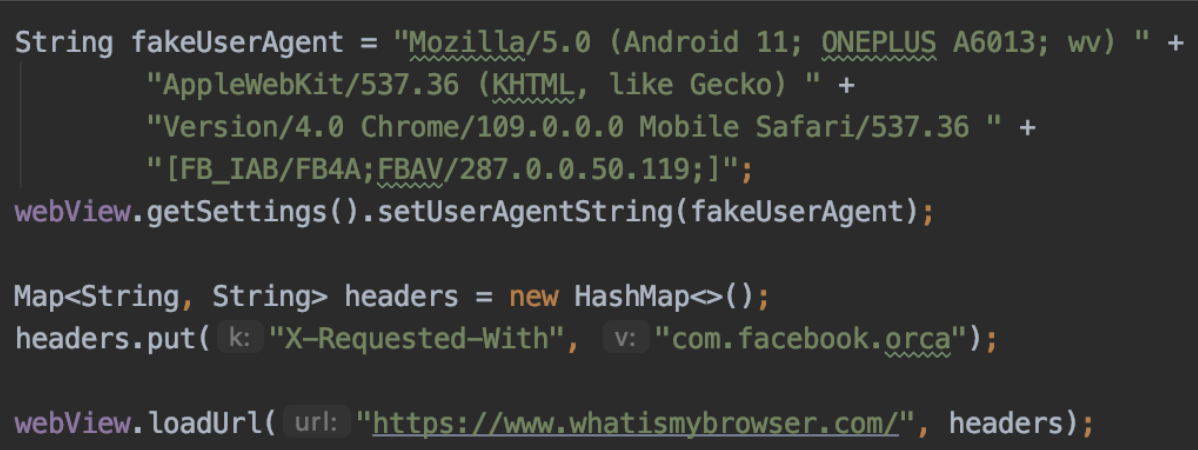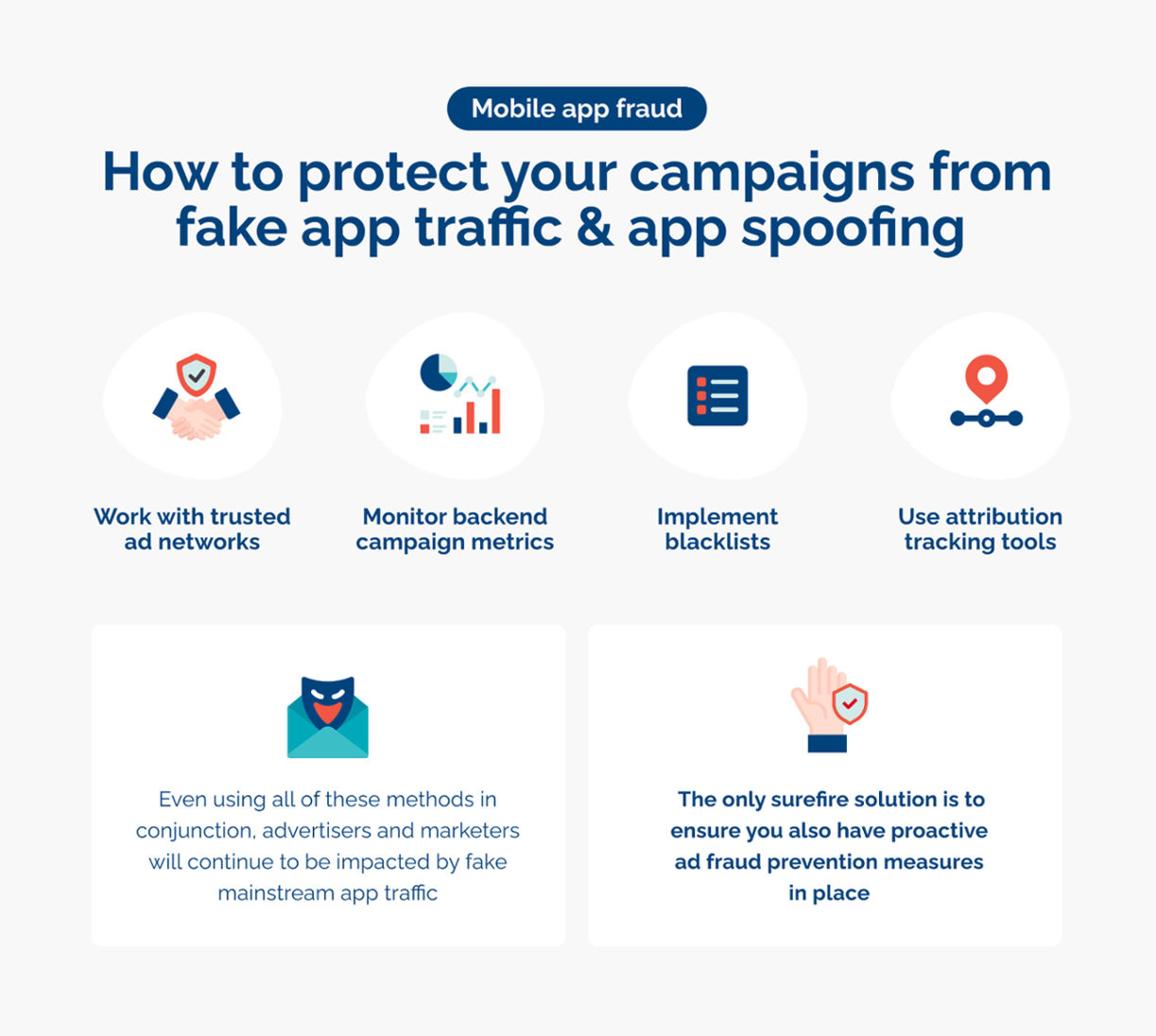Not content with just faking clicks and impressions on the average website with display ads, fraudsters are also using sophisticated ad fraud techniques to fake traffic from mainstream apps.
And just like all ad fraud practices, this type of mobile app fraud is costing advertisers and marketers billions of dollars every year.
With more and more people spending an increasing amount of time using apps like Facebook, Instagram, and TikTok daily, fraudsters are taking advantage of the increase in social media consumption by creating fake ad impressions and clicks that appear to be coming from these apps.
In reality, the traffic is coming from completely different, unrelated sources — and this presents advertisers and marketers with a huge challenge. Here, we take a look at how fraudsters fake traffic from popular social media apps, the impact it has, and how marketers can safely protect their ad campaigns from the consequences.
- How does this type of mobile app fraud occur?
- How and why do fraudsters fake traffic from famous mainstream apps?
- What impact does it have on advertisers & marketers?
- How to protect your ad campaigns from fake traffic & app spoofing
- How Opticks detects & prevents mobile app fraud
How does this type of mobile app fraud occur?
Advertisers usually buy traffic from popular mainstream apps such as Facebook because it provides access to a large, easy-to-target, and engaged audience. With billions of active users, these popular apps usually have their own platforms from which advertisers can purchase ad traffic.
However, since traffic acquisition usually requires a degree of specialized knowledge, advertisers often delegate and outsource it to third parties, such as networks and agencies. As more links are added to the traffic acquisition chain, the chances for fraudulent activity to occur increase.
Mobile app fraud and app spoofing occur when fraudsters create false impressions of app activity — such as installs, clicks, or ad impressions — that appear to come from a legitimate app. They do this by manipulating data or using fake apps that mimic popular apps to generate fake traffic. This technique is commonly used within ad fraud schemes as a ruse to trick advertisers into paying for fake traffic.
How and why do fraudsters fake traffic from famous mainstream apps?
As with the majority of ad fraud activity, fraudsters follow the money. In this case, they’re motivated by the premium rates paid for this kind of mainstream app traffic, since they can also easily generate an infinite supply of fake app traffic by using some of the Android platform features.
The easiest way to do this is to take advantage of the customization features of Android’s WebView component, which is the built-in browser used in most apps.
By using the WebView APIs, a fraudster can initiate several actions, including injecting JavaScript code onto a page or modifying the request headers.
While some headers cannot be easily modified, others are sensitive to manipulation. For example, the User-Agent and the X-Requested-With — which contain key information such as the operating system (OS), browser, and application package name — can be easily altered by adding just three lines of code.
The example below shows a code snippet that modifies both User-Agent and the X-Requested-With in order to make any application look like the Facebook app on a superficial level.

This same idea can be taken to the end — by changing the values to appear like other browsers on a different OS.
To show you just how this is done, we created a small application that changes some header values and easily tricks basic browser and device identification tools — from mainstream app tampering to other browsers and OS.
In the video below, you can see how the first tool correctly identifies the real Chrome Mobile browser, and then how rapidly it was tricked by our fake application.
What impact does faking traffic through mobile app fraud have on advertisers & marketers?
As with many other types of ad fraud and mobile app fraud, faking traffic on mainstream apps can be incredibly difficult to both detect and prevent.
Taking into account that advertisers are continuing to make huge investments in TikTok advertising, and the fact that our research shows that up to 40% of traffic alleging to be from real TikTok users is actually invalid in some cases, ad fraud detection and prevention is more important than ever.
Overall, there are three major impacts that fake mainstream app traffic has on marketers and advertisers:
Wasted ad spend
When advertisers pay for fake mainstream app traffic, they’re wasting their ad spend on clicks and impressions made by fraudsters, not real users who might be interested in their products or services.
Plus, with the rate at which fraudsters can emulate real traffic, they’re able to capture a substantial share of your campaign budgets that would otherwise be spent on real users. Ultimately, this can lead to a decrease in ROAS and reduces your ability to reach your campaign and revenue targets.
Reduced campaign effectiveness
Fake mainstream app traffic also negatively impacts the performance of your ad campaigns.
For example, if a significant portion of clicks or impressions is fake, it can skew campaign metrics and make it difficult to measure the success of each campaign accurately.
This also presents challenges for future campaigns. When your metrics are skewed, you can’t be sure what’s really working and what’s not. As a result, basing future campaign decisions on this data will impact your ability to reach your goals and accrue revenue.
Decreased trust between advertisers and ad networks
When advertisers outsource traffic acquisition and third parties subsequently buy traffic that has consistently high levels of fraudulent traffic, relationships between advertisers and ad networks are breached.
How advertisers and marketers can protect their ad campaigns from fake traffic and app spoofing

With the rise in social media app use, fraudsters are capitalizing on this to make bigger profits than ever.
There are a few ways that advertisers and marketers can detect the presence of fake mainstream app traffic in order to protect their campaigns, including:
- Work only with trusted ad networks: Before you partner with any ad network, make sure that they’re reputable and ensure that they’ve got their own fraud prevention measures in place. Conducting due diligence on potential partners is an essential part of any anti-ad fraud strategy.
- Monitor backend campaign metrics: Keeping track of ad campaign data and metrics helps you detect any unusual patterns or spikes in traffic, which could be indicative of app spoofing.
- Implement blacklists: IP blacklisting prevents specific IP addresses and servers from gaining access to websites and helps advertisers block traffic from known fraudulent sources.
- Use attribution tracking tools: These tools can track the source of your ad clicks and installs to help you identify suspicious activity and block fraudulent sources.
However, without proactive ad fraud prevention measures in place, advertisers and marketers will continue to be impacted by fake mainstream app traffic — even when using all these methods in conjunction with one another.
Opticks detects and prevents mobile app fraud before it can damage your campaigns
As discussed, while superficial, it’s incredibly easy for fraudsters to create fake traffic that can mislead both simple browser detectors and analytics tools.
These types of tools are no match for complex anti-fraud solutions like Opticks. To prevent fake mainstream app traffic, our robust anti-ad fraud solution applies several integrity checks and conducts feature verification based on deep knowledge of every browser on the market.
To find out more about how the expert team at Opticks can help you prevent mobile app fraud before it starts impacting your campaigns, contact us now.
